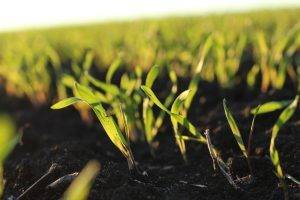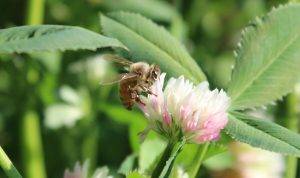Cover Crop Options for Prevent Plant Acres
 If considering cover crops for prevent plant acres, the first step is to talk with your insurance agent, early and often. Knowing your options for payments, cover and potential harvest or termination are important parts of the overall plan.
If considering cover crops for prevent plant acres, the first step is to talk with your insurance agent, early and often. Knowing your options for payments, cover and potential harvest or termination are important parts of the overall plan.
Should your plan include the use of a cover crop, here are some considerations to include in that planning process.
Before ordering, take inventory:
- Did you already apply a herbicide?
- If yes, what herbicide and does any residual affect which cover crops you can select?
- To review common watch-outs for herbicide residual, this guide from Penn State University is helpful
- What is your overall goal?
- Weed suppression, Erosion Control or Nutrient Fixation for row crop;
- Or Forage for Livestock
FORAGE OPTIONS
If the main goal is forage for livestock or grazing, timing matters. To receive full prevent plant payment the cover crop must not be harvested before November 1. If the main goal is tonnage, some crop options yield higher quality forage if harvested prior to November 1. Here are some crop options to consider:
Goal: Forage Harvesting After November 1 (for full Prevent Plant Payment)
Cereal Rye, also Winter Triticale, Winter Wheat
These cereal grain options provide fast establishment in dry or wet conditions and good weed suppression. In terms of forage quality, fields planted early to Mid-August will provide best growth, but will start to lose biomass and quality by November 1. All cereals planted earlier than the August time-frame will struggle to overwinter if planted early summer.
Ryegrass and Berseem Clover Mix
When seeded at about 15 lbs/a this cover crop mix can provide the benefit of fast establishment with excellent forage quality. It can tolerate close grazing and has good hay potential. Great weed suppression and a strong fiberous root system help break up layers of compaction. Berseem clovers adds 50-100lbs/A nitrogen to the mix for corn next season. Great before corn.
Goal: Forage Harvesting Prior To November 1 (for maximum forage tonnage and quality)
Oats
Oats are a great option for quick establishment, fast growth and a good palatable feed. We recommend them in a mix with a legume for added livestock benefit. If mixing, consider Oats with Sorghum-Sudangrass and/or turnips for early summer plantings and for late summer Oats with Berseem Clover.
Italian Ryegrass
Italian Ryegrass is another option for fast establishment while providing excellent forage quality. This crop tolerates close grazing and would have good hay potential with its higher tonnage as well.
Sorghum Sudangrass and Pearl Millet
These warm season options can be grazed within 4-5 weeks with medium to high palatability for livestock. These options would also provide high biomass for haying or chopping for silage.
Teff Grass
Teff grass is fast-growing and can be harvested in 60 days. It’s fine-stemmed with medium palatability for livestock feed.
GROUND COVER OPTIONS
Cereal Rye (Overwinters)
As mentioned before cereal rye provides fast establishment in dry or wet conditions and provides great cover for erosion control, weed suppression and organic matter to build soil health.
Ryegrass and Berseem Clover Mix (Winterkills)
When seeded at about 15 lbs/a this cover crop mix can provide the benefit of fast establishment with excellent forage quality. It can tolerate close grazing and has good hay potential. Great weed suppression and a strong fiberous root system help break up layers of compaction. Berseem clovers adds 50-100lbs/A nitrogen to the mix for corn next season. Great before corn.
Oats and Radish (Winterkills)
Oats and radish is another mix that can provide the cover needed for weed suppression when planted anytime from June to August. Fast growth and large amounts of aboveground biomass are perfect for holding onto nutrients from manure applications or fertilizer applied. Great before soybeans.
Berseem Clover is a quick growing summer annual clover with the main benefit being that it can produce 50-100 lbs/A of nitrogen for the following corn crop.
Disclaimer: There are several options available for prevent plant acres, please contact us at 1-877-GO-LATHAM to inquire about the benefits of different mixes. Be sure to communicate with your crop insurance company to understand the rules and regulations for planting a cover or forage crop before or after your “final plant date” and/or “Late Plant Date” in your state.
